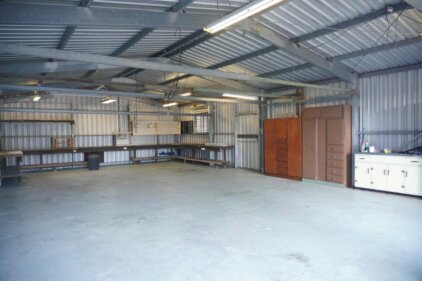As we strive towards a more sustainable future, one area that demands our attention is the construction industry. The way we build our homes and structures has a significant impact on the environment, and it is crucial that we adopt practices that minimize this impact. Sustainable construction is an approach that aims to address these concerns by focusing on eco-friendly materials, energy efficiency, and responsible resource management. In this article, I will delve into the world of sustainable construction, exploring its importance, benefits, and the techniques used to create modern homes that are both stylish and environmentally responsible.
The Importance of Sustainable Construction
Sustainable construction is more than just a passing trend; it is a vital aspect of our collective responsibility to protect the planet. By embracing sustainable construction practices, we can minimize the depletion of natural resources, reduce pollution, and mitigate the negative effects of climate change. The construction industry is a significant contributor to greenhouse gas emissions, and adopting sustainable practices can help curb this impact. Moreover, sustainable construction promotes healthier living environments, improves occupant comfort, and enhances the overall quality of life. As individuals and communities, it is our duty to prioritize sustainable construction to ensure a better and greener future for generations to come.
Benefits of Sustainable Construction
The benefits of sustainable construction are far-reaching and encompass various aspects of our lives. From an environmental standpoint, sustainable construction reduces the carbon footprint of buildings and minimizes waste generation. By using green building materials, such as recycled steel and reclaimed wood, we can reduce the extraction of raw materials and limit the release of harmful pollutants. Additionally, energy-efficient design principles, such as proper insulation and efficient HVAC systems, result in reduced energy consumption and lower utility bills for homeowners. Sustainable construction also promotes the use of renewable energy sources, such as solar panels and wind turbines, further reducing reliance on fossil fuels. Overall, embracing sustainable construction practices offers a win-win situation, benefiting both the environment and the homeowners.
Sustainable Construction Statistics
To better understand the impact of sustainable construction, let’s take a closer look at some eye-opening statistics. According to a report by the United Nations Environment Programme, buildings and construction account for 39% of global energy-related carbon dioxide emissions. Additionally, the World Green Building Council estimates that green building materials have the potential to reduce energy consumption by up to 50%. These figures highlight the urgent need for sustainable construction practices to combat climate change and promote environmental stewardship. It is clear that sustainable construction holds immense potential for creating a greener tomorrow.
Energy Efficient Design in Sustainable Construction
One of the key principles of sustainable construction is energy efficiency. By designing homes that maximize energy conservation, we can significantly reduce our carbon footprint. Energy-efficient design encompasses various aspects, including proper insulation, high-performance windows, and efficient lighting systems. Insulation plays a crucial role in minimizing heat transfer, keeping homes cool in summer and warm in winter. High-performance windows, on the other hand, allow natural light to enter while preventing heat loss or gain. Furthermore, using energy-efficient lighting, such as LED bulbs, reduces electricity consumption and extends the lifespan of the bulbs. By incorporating these design elements, sustainable construction ensures that homes are comfortable, energy-efficient, and environmentally responsible.
Renewable Energy Integration in Sustainable Construction
In addition to energy-efficient design, sustainable construction also emphasizes the integration of renewable energy sources. By harnessing the power of the sun, wind, and other renewable resources, we can further reduce our dependence on fossil fuels. Solar panels, for example, convert sunlight into electricity, providing a clean and renewable source of power. Similarly, wind turbines utilize wind energy to generate electricity, contributing to a greener energy mix. Integrating these renewable energy technologies into the construction of modern homes not only reduces carbon emissions but also offers homeowners the opportunity to generate their electricity and lower their energy bills. Sustainable construction allows us to tap into the abundance of renewable resources available to us and create a more sustainable energy future.
Passive Solar Design in Sustainable Construction
Passive solar design is a key aspect of sustainable construction that utilizes the natural elements to heat and cool homes. By strategically positioning windows, insulation, and thermal mass, passive solar design maximizes natural light and heat gain during the winter while minimizing heat gain during the summer. This design approach takes advantage of the sun’s path and the local climate to optimize energy efficiency and occupant comfort. Passive solar design principles, such as shading devices and natural ventilation, reduce the need for mechanical heating and cooling systems, resulting in lower energy consumption and reduced greenhouse gas emissions. Sustainable construction embraces passive solar design as a cost-effective and environmentally friendly way to create comfortable living spaces.
Low-Impact Construction Techniques
Sustainable construction goes beyond energy efficiency and renewable energy integration; it also focuses on low-impact construction techniques. These techniques aim to minimize the disturbance to the natural environment during the construction process. For example, adopting modular construction methods reduces waste generation and minimizes the environmental impact of transportation. Additionally, using locally sourced materials reduces the carbon emissions associated with long-distance transportation. Low-impact construction techniques also prioritize responsible water management, limiting water usage during construction and promoting rainwater harvesting for irrigation purposes. By implementing these techniques, sustainable construction ensures that the building process itself is as environmentally friendly as the final product.
The Use of Recycled Materials in Sustainable Construction
Another crucial aspect of sustainable construction is the use of recycled materials. By incorporating materials that have been salvaged or repurposed, we can reduce the demand for virgin resources and minimize waste sent to landfills. Recycled steel, for instance, can replace traditional steel in construction, significantly reducing the energy-intensive process of steel production. Similarly, reclaimed wood can be used for flooring and structural components, giving a second life to materials that would otherwise go to waste. Sustainable construction embraces the concept of circular economy, where materials are reused and recycled, contributing to a more sustainable and resource-efficient industry.
Water Conservation Techniques in Sustainable Construction
Water conservation is a pressing global issue, and sustainable construction plays a crucial role in addressing this challenge. By implementing water conservation techniques, we can reduce water consumption and preserve this precious resource. Sustainable construction promotes the use of low-flow fixtures, such as low-flow toilets and faucets, which significantly reduce water usage without compromising performance. Additionally, rainwater harvesting systems can collect and store rainwater for non-potable uses, such as irrigation and toilet flushing. Greywater recycling systems further enhance water conservation by treating and reusing water from sinks, showers, and laundry. By integrating these techniques, sustainable construction ensures responsible water management and contributes to the overall conservation of water resources.
Net-Zero Homes and Their Role in Sustainable Construction
Net-zero homes are at the forefront of sustainable construction, setting the standard for energy efficiency and environmental responsibility. These homes are designed to produce as much energy as they consume, effectively achieving a net-zero energy balance. Net-zero homes achieve this through a combination of energy-efficient design, renewable energy integration, and advanced technologies. With proper insulation, efficient appliances, and on-site renewable energy generation, net-zero homes can achieve a remarkable reduction in energy consumption and carbon emissions. By showcasing the potential of sustainable construction, net-zero homes inspire homeowners, builders, and policymakers to embrace energy-efficient and eco-friendly practices.
The Future of Sustainable Construction
As we look towards the future, sustainable construction is poised to play an even more significant role in shaping our built environment. Advancements in technology, materials, and design principles continue to drive innovation in sustainable construction. From 3D-printed buildings to smart homes with integrated energy management systems, the possibilities are endless. Additionally, the growing awareness of environmental issues and the increasing demand for sustainable living spaces will further propel the adoption of sustainable construction practices. The future of sustainable construction holds promise for creating a built environment that is not only aesthetically pleasing but also environmentally responsible.





